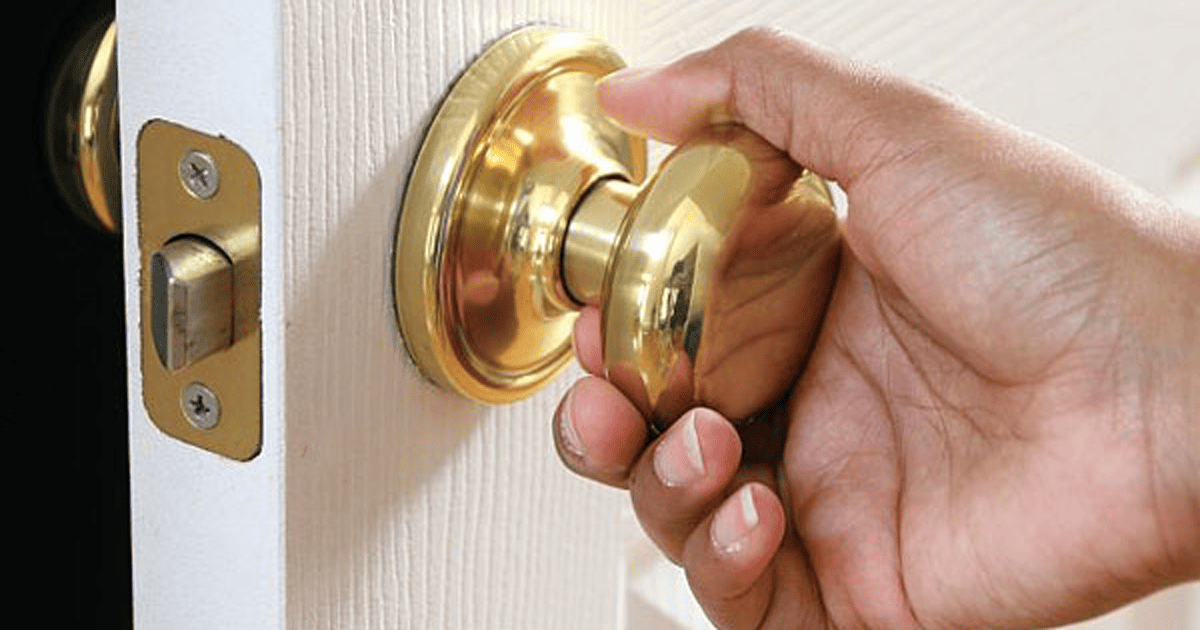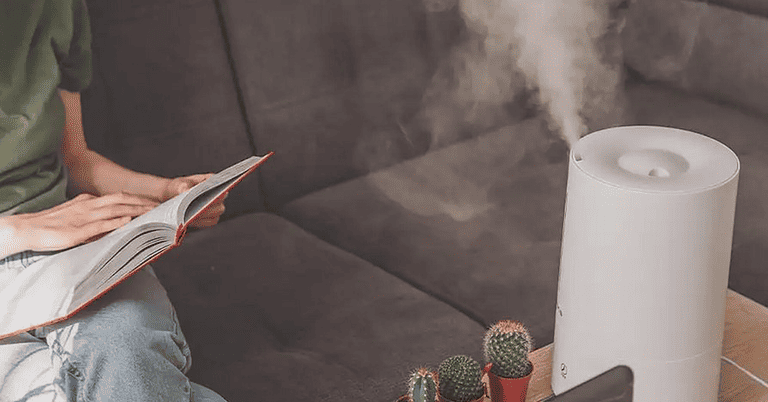How To Prevent Door From Slamming
Do you often hear the sound of doors slamming in your home, disturbing the peace and possibly causing damage? This common problem can be frustrating, but fortunately, several solutions are available to prevent it from happening.
This article will explore the leading causes of door slamming and provide practical techniques to stop it. One of the primary causes of a slamming door is air pressure differences between rooms. When a door is left open or closed too quickly, air rushes through, causing the door to slam shut. Additionally, loose hinges or misaligned latches can also contribute to slamming doors.
By understanding these causes, you can take action to prevent them and maintain a peaceful home environment.
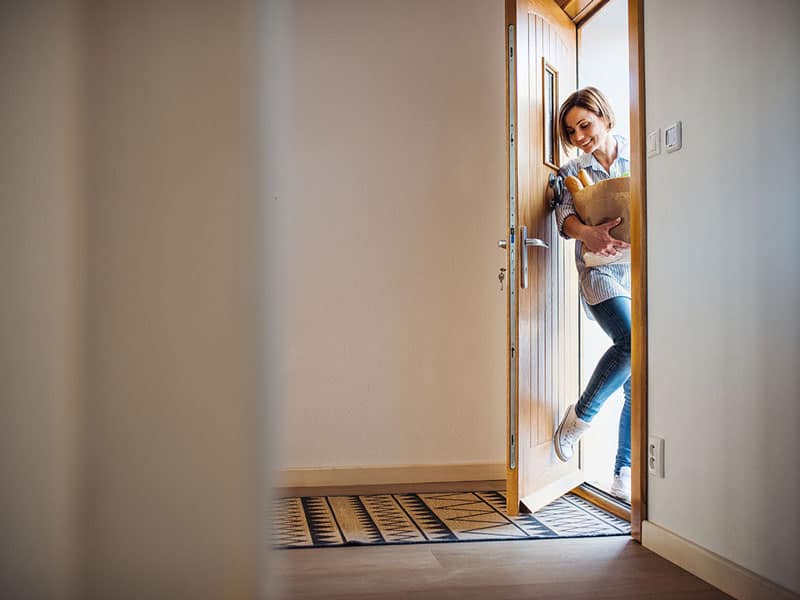
Discover the Main Causes of a Slamming Door
If you’re having trouble with doors slamming shut, several potential causes exist. Changes in air pressure can be a primary culprit, as can loose or damaged door hinges and weak or malfunctioning door frames.
Uneven flooring, misaligned doors, and improper door handle installation can also contribute to the problem. By addressing these underlying issues, you may be able to prevent your doors from slamming shut and causing damage or inconvenience.
Effects of air pressure on door slamming
Changes in air pressure can cause slamming doors, which can be damaging and pose safety hazards. Fortunately, there are several solutions available to prevent this problem. One option is to install an automatic door closer that uses hydraulic pressure to regulate the speed of the door’s movement. Weatherstripping and felt pads can also soften the sound of slamming doors and provide cushioning for a gentler close.
Additionally, anti-door slam products, such as door silencers or wedges, can hold the door open at any angle. Addressing these issues promptly is essential, as they can lead to damage and potential safety hazards. Loose or damaged door hinges are another common cause of slamming doors. (Read Do You Have To Turn Off Propane Tank After Grilling)
Loose or damaged door hinges
You may have noticed that your doors are making an annoying sound every time you open or close them, and it could be due to loose or damaged door hinges. To prevent it from slamming, follow these steps:
- Check the hinge screws and tighten any loose ones using a screwdriver.
- If the hinges are worn out or damaged beyond repair, consider replacing them with new ones.
- Lubricate the hinges with silicone spray every few months to keep them working smoothly.
- Install a doorstop on the floor or wall to stop your door from slamming against the frame.
These measures allow you to quickly stop your door from slamming due to loose or damaged hinges.
Moving onto weak or malfunctioning door frames…
Weak or malfunctioning door frame
To address a weak or malfunctioning door frame, it’s essential to identify the root cause of the issue and take corrective action. A weak or damaged door frame can cause the door to swing shut too quickly or not close properly, leading to slamming.
To prevent the door from slamming, you can tighten any loose screws in the frame and hinges, add a stopper to hold the door open, or muffle the sound with foam strips or felt pads attached to the edge. Replace the entire structure for a more robust and secure solution if necessary.
Once you’ve addressed any issues with the door frame, you can move on to addressing uneven flooring or misaligned doors that may also contribute to slamming.
Uneven flooring or a misaligned door
If your flooring is uneven or your door is misaligned, it can cause the door to swing shut too quickly and create a loud noise. To prevent the door from slamming closed due to these issues, you may need to address the edge of the door by adding felt pads or foam weatherstripping. Another option is to replace the hinges if the door is out of plumb. To help you understand how this affects your home, consider this table:
| Uneven Flooring | Misaligned Door |
|---|---|
| Creates tripping hazards | Causes damage to the frame and windows |
| This can lead to unstable furniture | Allows drafts into the home |
| Reduces property value | Increases energy bills |
By preventing your door from slamming, you can improve the safety and comfort of your home while protecting its value. The following section will discuss improper door handle installation and how it can contribute to slamming doors.
Improper door handle installation
Improperly installing your door handle can contribute to the annoying sound of doors closing too quickly and potentially damaging your infrastructure. To prevent spamming, ensure the door handle is installed correctly and securely.
Check for any loose screws or misaligned parts that may cause the door to swing shut too quickly. Additionally, consider using a door closer mechanism to regulate the speed of the door’s closure and prevent slamming.
Remember to inspect the hinges and replace any worn or damaged ones, as they can also contribute to slamming issues. Once you’ve ensured proper door handle installation, move on to effective door stoppers to prevent slamming.
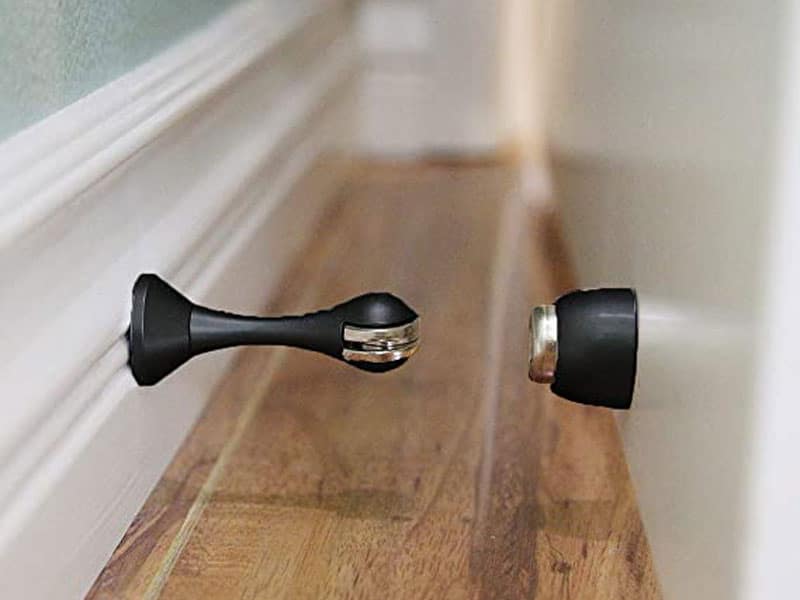
Effective Door Stoppers to Prevent Slamming
If you’re tired of the constant slamming of doors in your home, several effective solutions exist.
Felt pads can be attached to the edges of door frames and strike plates to muffle slamming noise.
A door wedge is a simple yet effective solution that can be placed at any angle to prevent doors from closing independently.
Installing a weather strip around the door’s perimeter can create a tight seal and reduce noise, while edge protectors can be used as a cushion to prevent damage and injury.
Soft-close door hinges are another option that will slow down the speed of the door and prevent it from slamming shut abruptly.
Using felt pads as a door silencer
By attaching felt pads to the edges of the door frame and strike plate, you can give your door a soft cushioning that will prevent it from slamming shut. Felt places are one of the best anti-door slam solutions available. They’re easy to install, inexpensive, and can be found in most hardware stores.
Not only do they stop the door from slamming shut best, but they also protect your door and walls from dents or scratches caused by constant banging. Felt pads also provide soundproofing that reduces noise pollution in your home or office space.
This is one of the simplest ways to stop a door from slamming shut without any complicated installation process or tools required. Now let’s move on to another easy solution for preventing entry hitting- using a door wedge as a simple doorstop solution.
Door wedge as a simple doorstop solution
A simple door wedge lets you keep your doors from slamming shut. It provides a quick and hassle-free solution that will save you from the frustration of constant banging. A door wedge is a small triangular object made of rubber or wood that can be placed under the door to prevent it from closing.
It’s an affordable and effective way to stop a door from slamming without having to install any hardware on the frame or door itself. However, if you want to ensure a tight seal and prevent drafts, installing a weather strip is recommended.
Install a weather strip for a tight seal.
Oh, you thought that door was sealed tight? Not anymore. Install a weather strip to keep those pesky drafts out and give your slamming door extra cushion.
A weather strip is an excellent solution for preventing door slamming problems caused by the wind catching the door or rough framing. It’s easy to install and provides a tight seal around the door edge, reducing noise and providing insulation against cold air. Pair it with a draft stopper for added protection against drafts to make it even more effective.
With this simple addition, you can say goodbye to slamming doors once and for all. Next, explore how to create a door cushion using edge protectors.
Create a door cushion using edge protectors.
Are you looking for a fun DIY project to solve your noisy door problem? Let’s get creative and make a door cushion using some edge protectors!
This is a great way to prevent your door from slamming shut. Attach the edge protectors to your door’s frame, which can be found at any hardware store. This will stop your door from hitting and create a soft cushioning effect.
It’s one of the best anti-spam solutions available and is perfect if you’re looking for ways to stop your door from slamming without spending too much money. Once you’ve created your cushion, it’s time to move on to soft-close door hinges to slow down the door even more effectively.
Soft-close door hinges to slow down the door.
To achieve a quieter and safer home, consider installing soft-close door hinges that gently and slowly close the door without any loud banging. These hinges are available for interior and exterior doors, and they work by using a hydraulic mechanism to control the speed of the closing door.
Soft-close hinges are an effective door slam preventer that also prolongs the lifespan of your entries by preventing damage from hitting. While automatic door closers can be pretty pricey, soft-close hinges offer a more affordable option for those looking to upgrade their doors.
However, if you want a more permanent and efficient solution, you can install a closed door to avoid slamming altogether.
Installing Door Closers to Avoid Slamming
If you’re tired of dealing with slamming doors, installing an automatic door closer could be the solution you need. The installation involves attaching the closer to your door and adjusting it for optimal performance.
Choosing the right door closer is essential based on factors like door weight and usage frequency, while regular maintenance and adjustments can ensure reliable operation over time.
Common problems with door closers can include leaks or misalignment, but upgrading to an automatic system can offer benefits like improved security and accessibility.
Automatic door closer installation process
Installing an automatic door closer is a simple process you can do yourself with a few essential tools. First, ensure you have the correct door type closer for your entry, such as a pneumatic door closer.
Next, install the top and bottom brackets of the door stop onto the frame and door, respectively. Then, attach the arm to the shelves and adjust it according to your preference.
Finally, test the installed door closer by opening and closing it to ensure it smoothly controls its movement and prevents slamming. Following these steps can successfully prevent door slamming in your home or office space.
Now, let’s move on to choosing the right door closer for your specific type of door.
Choose the right door closer for your door type.
Choosing the right door closer for your specific type of door can be a fun and creative way to prevent entry slamming while enhancing the overall aesthetic of your space. When selecting a door closer, consider the weight and size of your door and its types, such as an anti-slam door or one with a top hinge.
Look for features like adjustable closing speed and an air-filled piston for smoother operation. Make sure to install the strike plate to ensure optimal performance properly. Once installed, regularly maintain and adjust the door closer to keep it functioning correctly without slamming shut.
With the right choice and proper maintenance, a door closer can add an extra layer of security while preventing damage to your infrastructure. Transitioning into maintaining and adjusting a door closer, regular upkeep is essential for ensuring long-term effectiveness without slamming shut abruptly. (Learn How To Clean White Doors In House)
Maintaining and adjusting a door closer
Now that you’ve chosen the right door closer for your door type, it’s essential to maintain and adjust it properly to prevent entry slamming.
Regularly check the closer tension and adjust it using the adjustment screws on the bottom of the closed door. Make sure that the arm of the more intimate is correctly positioned at both the top and bottom of the door jamb.
You may also need to adjust or replace worn-out parts, such as hinges or pins, to ensure proper functioning. Maintaining and changing your door closer can effectively prevent slamming doors in your home.
With these tips in mind, let’s address common problems with door closers.
Addressing common problems with door closers
To ensure the proper functioning of your door closer, it’s important to address common issues that may arise, such as misalignment or worn-out parts.
If the door is not closing correctly, try adjusting the tension on the closer by turning the screw clockwise or counterclockwise.
If this doesn’t work, check for any obstructions in the track, unscrew the closer from the door, and inspect it for any damage or wear.
You can also lubricate the moving parts with a silicone-based spray to keep them operating smoothly.
Properly addressing common problems with your door closers can help prevent door slamming and secure your doors inside your home.
Upgrading to automatic door systems can also provide additional benefits, such as improved security and convenience, without sacrificing style or design elements in your home.
Benefits of upgrading to automatic door systems
Upgrading to automatic door systems enhances your home’s security and convenience and adds a touch of modern elegance to your interior design. Installing an automated door system can prevent door slamming and ensure the door is permanently closed correctly. With just a touch of a button or motion sensor, the automatic system will regulate the speed and pressure of the door, keeping it from slamming shut. No more worrying about unscrewing hinges or trying to fix the door alignment – an automatic system takes care of everything for you. Plus, with added features like remote access and programmable settings, upgrading to an automated door system offers even more benefits beyond preventing slamming doors. Check out this table comparing different types of automatic door systems:
| Type | Benefits |
|---|---|
| Swing Door Operators | Ideal for high-traffic areas and ADA compliant |
| Sliding Door Systems | Space-saving solution for tight areas |
| Revolving Doors | Energy efficient option for climate control |
Now let’s explore weatherstripping solutions for door-slamming prevention.
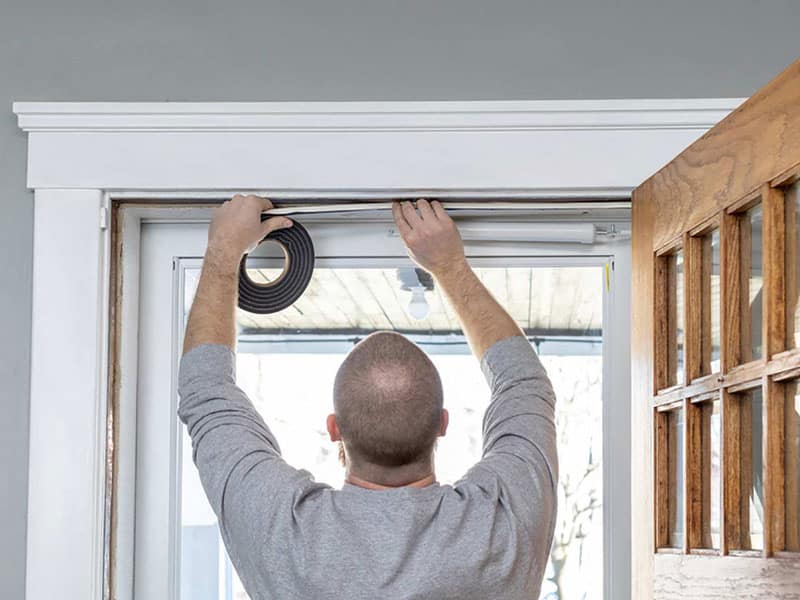
Weatherstripping Solutions for Door Slamming Prevention
If you want to prevent door slamming, it’s essential to understand the significance of weatherstripping in sealing your doors.
Depending on your needs, you can use different materials for weatherstrippings, such as rubber or foam.
Proper installation and regular maintenance of weatherstripping can help prolong its lifespan and improve energy efficiency in your home.
Importance of weatherstripping indoor sealing
Foam weatherstripping is a sturdier anti-slam solution for heavy, solid wood doors. It can effectively muffle the sound of slamming while ensuring a secure seal.
If you have a door inside your home that frequently slams shut due to wind catching it, weatherstripping can help stop this problem by preventing it from moving too much.
The importance of weatherstripping lies in its ability to provide insulation and prevent drafts from entering your home. In addition to muffling the sound of slamming doors, weatherstripping also helps to improve energy efficiency and reduce heating/cooling costs.
Moving on to the next section about different types of weatherstripping materials…
Different types of weatherstripping materials
When it comes to weatherstripping, various materials can effectively seal gaps around doors and windows inside your home, helping you learn how to stop your door from slamming shut.
Weatherstripping materials include felt, foam, rubber, and vinyl. Felt is a cost-effective option that can be easily attached to the door frame with adhesive or nails.
Foam weatherstripping is sturdier than felt and ideal for heavy solid wood doors. Rubber weatherstripping is durable and long-lasting but may require unscrewing it from the door for replacement.
Vinyl weatherstripping is easy to install with self-adhesive backing but may not be as effective in extreme temperatures or high humidity levels. Choosing the correct type of weatherstripping material can help stop your door from slamming shut. Still, proper installation is also crucial in effectively sealing gaps around your doorways.
Proper installation of weatherstripping
Properly installed weatherstripping can be as effective as a tightly sealed jar, keeping unwanted drafts and outside air from entering your home. To learn how to stop your door from slamming shut, start by identifying the type of weatherstripping material you need for your door.
Measure the length of the frame and cut the weatherstripping to size. Clean the surface where you’ll apply the weatherstripping with a damp cloth and let it dry completely. Peel off the backing tape and carefully align the weatherstripping along the frame, pressing firmly to ensure it adheres properly. If needed, trim any excess with scissors or a utility knife.
Please ensure not to stretch or compress the material while installing it, as this may affect its effectiveness in preventing drafts and slamming doors in the future. Proper weatherstripping installation can help stop your door from attacking, but maintaining and replacing worn-out weatherstripping is also essential to ensure maximum efficiency in preventing drafts inside your home without causing any damage to your doors or frames.
Maintaining and replacing worn-out weatherstripping
Maintaining and replacing worn-out weatherstripping is crucial in keeping your home draft-free and ensuring the longevity of your doors and frames. To learn how to stop a door from slamming shut inside your home, start by identifying any areas where the weatherstripping appears worn or damaged.
Then, follow these steps:
- Remove the old weatherstripping by unscrewing it from the door, being careful not to damage the frame or door itself.
- Clean any residue left behind with a mild soap solution and let dry completely.
- Install new weatherstripping carefully, cutting it to fit snugly around corners and along edges.
By maintaining and replacing worn-out weatherstripping, you can ensure that door slamming should cease while improving energy efficiency with proper sealing techniques.
Improving energy efficiency with weatherstripping
By upgrading your weatherstripping, you can create a more energy-efficient home that saves you money and helps reduce your carbon footprint.
Learning to stop drafts and air leaks inside your home is critical to preventing doors from slamming shut. Weatherstripping involves applying a seal around the edges of the door using self-adhesive foam strips or rubber gaskets.
You can easily remove old weatherstripping by unscrewing it from the door and cleaning the area before installing new strips or gaskets. Once established, the door slamming should cease, and you’ll notice an improvement in energy efficiency throughout your home.
In the next section, we’ll discuss some DIY techniques to stop a door from slamming without replacing any hardware or installing additional equipment.
DIY Techniques to Stop a Door From Slamming
Several options are available if you’re looking for DIY techniques to stop a door from slamming. Adjusting the hinges can provide a more secure fit while using a rubber band as a makeshift door stopper can prevent damage and noise.
Muffling tape can also be applied to minimize noise, or try creating your homemade door cushion. Using household items like clothes or towels can also prevent door slamming.
Adjusting the door hinges for a secure fit.
Adjusting the hinges on your door can help ensure a secure fit and prevent slamming. To learn how to stop your door from constantly slamming shut inside your home, start by unscrewing the hinge from the door and adjusting it until it fits snugly against the frame.
Use a level to ensure both sides of the door are even before reattaching the hinge. You can also adjust the strike plate on the edge of the doorframe if needed. Once you’ve made these adjustments, test your door by opening and closing it gently to see if it slams shut.
If it does, consider using a rubber band as a makeshift door stopper and adjusting the hinges for maximum effectiveness.
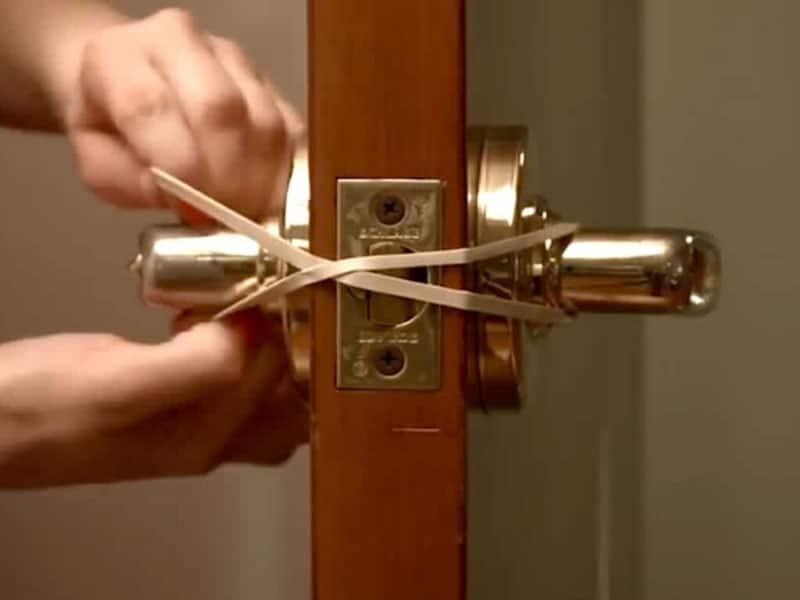
Using a rubber band as a makeshift door stopper
Using a rubber band as a makeshift door stopper is a simple and effective solution for preventing your door from slamming shut inside your home. When the door tries to slam, the rubber band will absorb the force and help stop your door from closing too hard.
To use this method, loop a rubber band around one doorknob, stretch it across the edge of the door, and twist it around the other doorknob on the opposite side. Adjust its position so that it cushions against the frame when opened and prevents slamming when closed.
If you need to adjust or remove the rubber band, unscrew it from the door using pliers or tweezers. Applying muffling tape to minimize noise is another option for reducing noise caused by door slamming without replacing hinges or installing extra hardware. (Learn How To Fix A Stripped Screw)
Applying muffling tape to minimize noise
Listen up, folks! Here’s a nifty trick to hush those noisy entrances – apply muffling tape to the edges of your door frame for a more subtle solution.
By following these steps, you can learn how to stop your door from slamming shut and minimize the noise in your home:
- Clean the surface of the door frame where the tape will be applied.
- Measure and cut strips of muffling tape to fit the length of each side of the door frame.
- Peel off the backing and press firmly onto the edge of the frame.
- Repeat on all sides.
With this simple fix, door slamming should cease, and you’ll enjoy a quieter living space.
Now let’s move on to creating a homemade door cushion…
Creating a homemade door cushion
Want a quick and easy way to muffle the noise of your doors without spending too much money? Let’s show you how to create your door cushion using materials you probably already have at home.
First, cut a small rectangular piece of foam or sponge that can fit inside the door frame. Then, cover it with fabric or felt and secure it with glue or tape.
Once completed, screw in the door stopper on the back of the door and attach the cushion to it. This will help prevent your door from swinging shut too hard and eliminate slamming noise.
With this solution, learning how to stop your door from slamming should cease to be a problem for you.
Now let’s move on to using household items to prevent door slamming.
Using household items to prevent door slamming
Household items can be surprisingly effective in quieting the noise of doors and preventing damage to your home. Using everyday household items teaches you to stop a door from slamming shut. For instance, placing a rubber band onto the door frame or screwing in a door bumper on walls can prevent the door from hitting hard surfaces and causing damage.
Using felt pads or foam strips attached to the edges of the door frame and strike plate provide soft padding and cushioning for quiet closing. A table made of repurposed materials, such as old books or wooden crates attached to the wall opposite the door, can act as a makeshift barrier preventing it from slamming shut with great force. These are simple yet effective hacks that not only stop entry-hitting but also add an element of creativity to your home decor.
Conclusion
Congratulations! You’ve successfully learned how to prevent door slamming. By understanding the common causes of this problem and implementing practical solutions, you can ensure a safe and peaceful home environment.
Some ways to prevent door slamming include using door closers, self-closing doors, door stoppers, felt pads, and foam weatherstripping. Regular maintenance and soundproofing can also help.
Don’t let a simple issue like this cause damage to your home or harm to your loved ones. Instead, take action today by following these tips and tricks. Remember, “an ounce of prevention is worth a pound of cure.”
Invest in preventing door slamming now to avoid costly repairs later on. With these techniques, you can rest easy knowing that your doors will permanently close quietly and safely.

